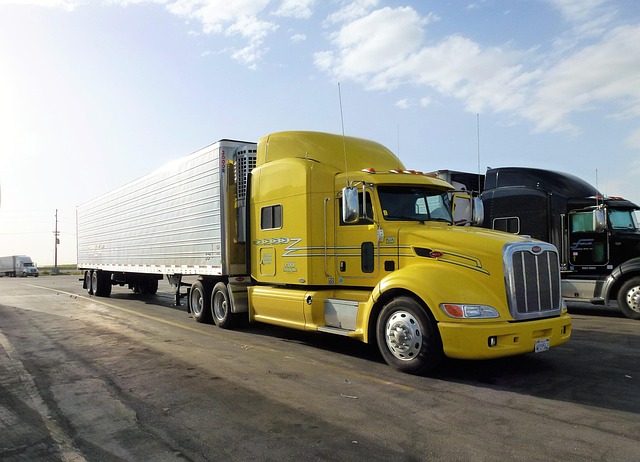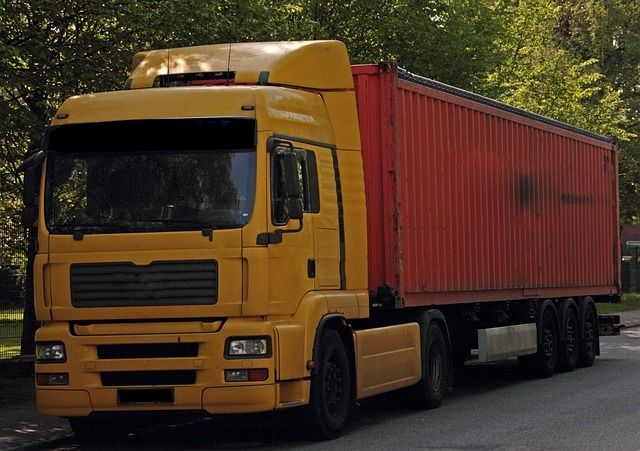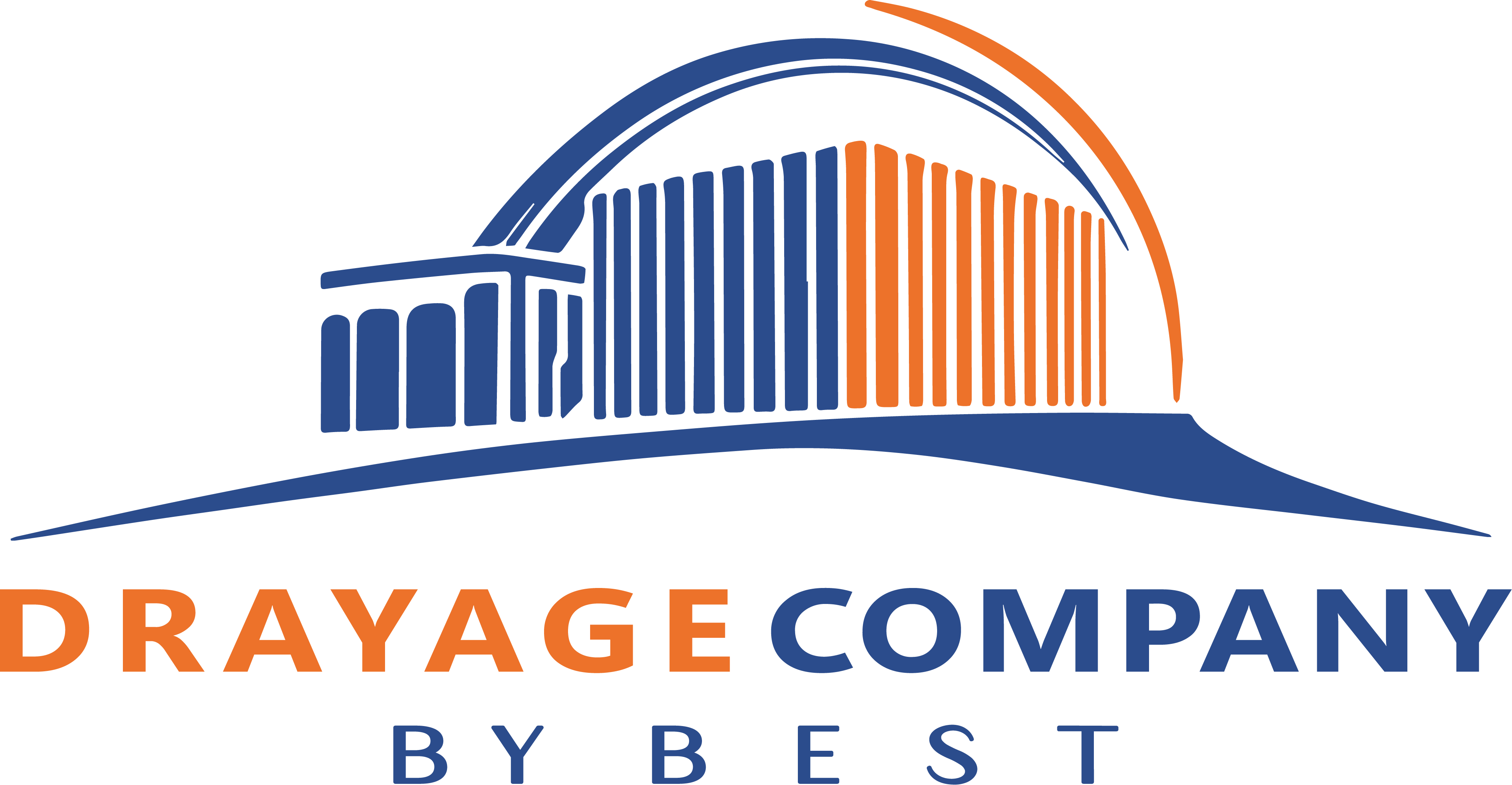Freight drayage trucking in NYC keeps the city’s fast-moving supply chains running smoothly. From ports and rail yards to distribution centers and storefronts, goods need to move quickly and precisely to meet the demands of industries operating on tight schedules. Drayage logistics services in NYC handle the crucial “first mile” and “last mile” of shipping, often under time pressure and through congested urban routes.
Here are five industries that rely on freight drayage every single day.
Table of Contents
Key Takeaways
✔ Retail and e-commerce businesses depend on freight drayage trucking in NYC to keep shelves stocked and fulfill rapid delivery demands.
✔ Food and beverage companies rely on expedited drayage trucking in New York City to maintain cold chain integrity and restock daily.
✔ Manufacturers use heavy haul drayage trucking in New York City to transport raw materials and oversized equipment on tight production schedules.
✔ NYC’s entertainment industry depends on last-mile drayage trucking in NYC to move staging, sets, and gear quickly and securely.
✔ Construction projects require drayage logistics services in NYC to deliver heavy equipment and building materials with precision.
✔ NYC infrastructure like tunnels, traffic, and limited loading zones makes specialized freight drayage trucking in NYC essential for smooth operations.
✔ From port pickup to final delivery, coordinated drayage logistics services in NYC ensure fast, compliant, and cost-effective freight movement.

1. Retail and E-Commerce
Retail and e-commerce companies rely on fast, reliable transportation to meet customer expectations and manage inventory. Container drayage companies play a key role by connecting ports, rail, and trucks, accounting for 25% to 40% of shipping costs. In New York City, stores and warehouses often work with tight delivery windows and limited storage space. That’s where freight drayage trucking in NYC becomes essential for moving goods efficiently.
How Freight Drayage Supports Retail and E-Commerce
- Fast Restocking Keeps Inventory Flowing: Retailers use expedited drayage trucking in New York City to move products quickly from ports to shelves. When demand spikes or new products launch, stores can’t afford delays in stocking their locations.
- Distribution Centers Rely on Last-Mile Delivery: E-commerce hubs often sit outside the city, but deliveries still need to reach final destinations across NYC. That’s where last-mile drayage trucking in NYC ensures packages reach storefronts, locker pickups, or residential buildings without delay.
- Bulk Shipments Require Heavy Freight Handling: Large retailers regularly receive high-volume shipments that can’t be handled by standard vehicles. Heavy haul drayage trucking in New York City moves bulk inventory from port terminals to fulfillment centers or flagship stores, often in a single trip.
2. Food and Beverage Distribution
The food and beverage industry in New York City operates on tight timelines and strict quality standards. Products must be delivered quickly, safely, and often under temperature-controlled conditions. Freight drayage trucking in NYC ensures fresh inventory reaches restaurants, grocery stores, and distribution centers on time.
How Freight Drayage Keeps Food and Beverage Supply Chains Moving
- Cold Chain Transport Requires Precision: Perishable goods must remain at consistent temperatures during transit. Expedited drayage trucking in New York City ensures that meats, dairy, produce, and frozen foods are quickly moved from ports or rail hubs to cold storage or kitchens before spoilage risks increase.
- Last-Mile Delivery Supports Urban Food Access: Restaurants, bodegas, and food service vendors across the city rely on last-mile drayage trucking in NYC for daily restocking. With narrow streets and strict delivery windows, specialized carriers handle these time-sensitive, short-distance hauls.
- Bulk Beverage Loads Demand Heavy Haul Capacity: Distributors often receive large shipments of bottled water, soda, beer, and wine. Heavy haul drayage trucking in New York City is used to transport these weighty pallets safely and in compliance with city transport regulations.
3. Manufacturing and Industrial Supply
Manufacturing companies in NYC depend on steady supply lines for raw materials, equipment, and parts. Delays in even one delivery can bring production lines to a halt. Freight drayage trucking in NYC ensures the timely arrival of everything from steel beams to machine components.
Why Manufacturers Depend on Reliable Drayage
- Raw Material Delivery Keeps Production Running: Many manufacturers import raw materials through local ports and rail yards. Drayage logistics services in NYC bridge the gap between these entry points and urban factories or workshops, preventing costly delays.
- Time-Sensitive Deliveries Need Speed: Precision manufacturing often runs on just-in-time inventory systems. Expedited drayage trucking in New York City helps ensure critical parts arrive exactly when needed, avoiding production slowdowns.
- Oversized Loads Require Specialized Transport: Machinery, tools, and industrial supplies often exceed standard freight dimensions. Heavy haul drayage trucking in New York City handles these oversized shipments with the right equipment and experience to navigate the city safely.
4. Film, Events, and Entertainment
From Broadway productions to film shoots and concerts, NYC’s entertainment industry is constantly on the move. Moving lighting rigs, stage sets, sound systems, and props takes precision and speed. Freight drayage trucking in NYC is the behind-the-scenes force that keeps productions on schedule.
How Drayage Supports NYC’s Creative Industries
- Tight Timelines Require Expedited Solutions: Film and event crews often face immovable deadlines. Expedited drayage trucking in New York City ensures staging materials, camera gear, and promotional setups arrive just in time—sometimes within hours of being requested.
- Large Equipment Moves Need Heavy Haul Support: Concert stages, catwalks, or theater backdrops are not light or easy to move. Heavy haul drayage trucking in New York City helps transport these oversized and fragile items securely, often overnight, to meet tight production schedules.
- Pop-Ups and Activations Depend on Last-Mile Access: NYC hosts hundreds of temporary events each year. Last-mile drayage trucking in NYC plays a crucial role in navigating permits, restricted zones, and delivery windows to bring equipment directly to busy sidewalks, rooftops, or public venues.
5. Construction and Infrastructure Projects
Construction and infrastructure projects shape the future of NYC’s skyline, roads, and public spaces. These massive undertakings require a constant flow of materials and machinery—often delivered to tight, congested worksites. Freight drayage trucking in NYC ensures that every piece of construction equipment and materials arrives on time.
Why Construction Depends on Strong Drayage Support
- Heavy Equipment Requires Specialized Handling: Excavators, cranes, and steel supports can’t be hauled by standard trucks. Heavy haul drayage trucking in New York City handles these massive loads with precision, using reinforced trailers and experienced drivers to deliver safely through tight urban spaces.
- Job Site Timing Demands Quick Turnarounds: With limited staging areas and strict project timelines, construction crews need materials delivered exactly when scheduled. Expedited drayage trucking in New York City provides just-in-time delivery for items like concrete forms, rebar, or modular structures.
- Urban Projects Rely on Last-Mile Access: Building in NYC means navigating narrow streets, zoning rules, and traffic restrictions. Last-mile drayage trucking in NYC provides tailored delivery solutions that bring materials right to the site, whether it’s a bridge renovation or high-rise foundation.
How to Choose the Right Drayage Partner in NYC
Choosing a drayage partner in a city as complex and fast-paced as New York requires more than just a quick online search. Companies need a provider that understands the region, follows regulations, and offers the flexibility to move freight of all shapes and sizes. The right partner will keep operations running smoothly, reduce delays, and offer reliable access to freight drayage trucking in NYC, no matter the industry.
1. Look for Local Expertise
A drayage company with deep roots in NYC understands the city’s strict traffic laws, limited access roads, and high-volume delivery zones. They know how to plan around bridge restrictions, peak traffic hours, and loading zone permits. A provider experienced in last-mile drayage trucking in NYC can navigate these challenges without costly detours or missed delivery windows.
2. Check for Full-Service Capabilities
A strong partner should offer more than just basic transportation. Look for carriers that handle everything from port pickup to warehouse drop-off, including heavy haul drayage trucking in New York City for oversized or high-weight cargo. When drayage logistics services in NYC are bundled into one provider, it simplifies coordination and keeps communication clear.
3. Verify Equipment Range and Readiness
Not all drayage jobs are alike—some require flatbeds, liftgates, or chassis with specialized locking systems. A reliable company will maintain a diverse fleet that supports expedited drayage trucking in New York City and other specialized moves. The ability to quickly dispatch the right vehicle type saves time and avoids delays at pick-up points.
4. Ask About Regulatory Compliance
Drayage in NYC is subject to strict local, state, and federal rules—especially for oversized freight. Partners offering heavy haul drayage trucking in New York City must have proper permits, safety protocols, and up-to-date vehicle inspections. Companies that stay on top of these details help clients avoid fines, penalties, or unexpected shipment holds.
5. Evaluate Real-Time Communication Tools
With miscommunication often cited as a leading cause of project failures, modern drayage providers must offer real-time updates on load status, delivery windows, and route tracking to ensure transparency and efficiency. Expedited drayage trucking in New York City depends on this level of visibility, especially for tight-schedule deliveries. When a carrier can offer this level of transparency, businesses can make faster decisions and avoid costly slowdowns.
6. Consider Scalability for Growth
As business expands, so do transportation needs. The best drayage logistics services in NYC are built to scale, offering flexible solutions like freight drayage trucking in NYC for standard loads and last-mile drayage trucking in NYC for high-volume delivery cycles. A scalable partner becomes a long-term asset, able to adapt to shifting supply chain demands.
How NYC Infrastructure Affects Drayage Trucking Operations
New York City’s infrastructure is dense, aging, and always under pressure. From congested roadways to limited port space, these factors shape how freight drayage trucking in NYC operates on a daily basis. Understanding these challenges helps businesses choose the right drayage logistics services in NYC that can adapt, plan, and deliver efficiently.
1. Port Proximity Shapes Delivery Schedules
Most freight entering the region moves through the Port of New York and New Jersey, one of the busiest on the East Coast. Carriers offering expedited drayage trucking in New York City must plan around terminal hours, container availability, and port congestion. A delay at the port can ripple through the supply chain without a responsive and experienced drayage partner.
2. Limited Road Access Impacts Route Planning
NYC’s roadways aren’t built for high-volume truck traffic, especially in older boroughs like Manhattan and Brooklyn. Freight drayage trucking in NYC often requires detailed planning to avoid parkways with low overpasses and streets with delivery restrictions. Carriers familiar with these constraints provide better last-mile drayage trucking in NYC with fewer routing surprises.
3. Bridge and Tunnel Restrictions Limit Freight Movement
Essential freight corridors like the George Washington Bridge, Lincoln Tunnel, and Queens-Midtown Tunnel have weight, height, and timing limitations. Heavy haul drayage trucking in New York City must comply with these rules, often requiring permits or rerouting. Carriers that plan ahead avoid legal issues and minimize downtime for their clients.
4. Traffic Congestion Increases Transit Times
New York City is known for unpredictable traffic—especially during rush hours or street closures. Expedited drayage trucking in New York City relies on time-sensitive delivery windows, so delays can disrupt entire operations. Carriers using smart route planning and real-time updates can offset the risks of urban congestion.
5. Construction Zones Create Delivery Challenges
From subway renovations to building projects, NYC streets are constantly under construction. This creates access issues for freight drayage trucking in NYC, especially when space for loading or unloading disappears. Drayage logistics services in NYC that maintain contact with DOT alerts and traffic management tools stay ahead of these disruptions.
6. Loading Zones Are Scarce and Competitive
Finding legal, accessible loading space in NYC can be nearly impossible during peak hours. Last-mile drayage trucking in NYC must contend with competition for curbside space, limited windows for commercial drop-offs, and tight maneuvering conditions. Carriers with experience in urban logistics know how to time deliveries and work within these tight limits.
How Drayage Works from Port to Final Destination
Drayage is the unseen engine behind nearly every product that enters New York City. It starts at the port and ends at a warehouse, store, or job site—often within the same day. Each step along the way requires careful coordination, especially in a city as complex as NYC. From freight drayage trucking in NYC to last-mile delivery, here’s how the process unfolds.
1. Container is Retrieved from Port Terminal
Once a shipment clears customs, it’s released to a drayage carrier for pickup. Freight drayage trucking in NYC typically begins here, with drivers retrieving loaded containers from terminals in Port Newark or Port Elizabeth. Timing is critical—missed appointments can result in storage fees and shipping delays.
2. Chassis is Matched to the Container
To move the container, a compatible chassis must be used, which is often sourced separately at the terminal. Drayage logistics services in NYC coordinate chassis availability in advance to avoid shortages or mismatches. This step is especially important for expedited drayage trucking in New York City, where every minute counts.
3. Documentation is Verified Before Transport
Before a truck can leave the port, all paperwork—bill of lading, delivery order, and terminal release—is verified. This verification ensures that freight drayage trucking in NYC remains compliant with port authority protocols and avoids detention fees. Carriers that streamline this step keep freight moving without administrative delays.
4. Freight is Hauled to a Cross-Dock or Warehouse
Once on the road, the container is transported to a local warehouse, cross-dock facility, or distribution center. Heavy haul drayage trucking in New York City may be used for oversized or over-limit cargo that requires special permits. At this point, freight is either stored temporarily or prepped for last-mile delivery.
5. Cargo is Unloaded, Sorted, or Consolidated
At the destination facility, goods are unloaded and often reorganized for smaller deliveries. Last-mile drayage trucking in NYC may take over from here, especially when items need to reach multiple retail locations or customers. This step requires precision handling to avoid damage and maintain shipment accuracy.
6. Final Delivery is Completed Within City Limits
The last leg of the journey involves moving freight to its final destination—often within dense, high-traffic neighborhoods. Drayage logistics services in NYC use smaller vehicles or box trucks for this final stretch to navigate narrow streets and strict delivery timeframes. A smooth transition from port to doorstep relies on careful planning at every stage.

Frequently Asked Questions (FAQs)
What is the difference between drayage and long-haul trucking?
Drayage focuses on short-distance freight movement, typically from ports, rail yards, or airports to nearby facilities within the same metropolitan area. Long-haul trucking involves transporting goods over hundreds or thousands of miles across state lines or regions. In New York City, freight drayage trucking in NYC bridges the critical gap between container terminals and final local destinations.
Can drayage services handle hazardous materials?
Yes, but only specialized carriers with proper licensing and training can legally transport hazardous materials. These shipments require strict adherence to DOT and EPA regulations and often involve specific routing and safety protocols. Heavy haul drayage trucking in New York City is sometimes used for industrial-grade materials that exceed normal size or weight thresholds. Businesses must confirm that their provider is equipped for hazmat transport before scheduling a pickup.
Do drayage companies offer storage or warehousing options?
Many drayage providers in NYC offer short-term storage or access to warehouse space as part of their service packages. This is especially helpful when freight arrives early or needs to be held before final delivery. Drayage logistics services in NYC often include cross-docking, sorting, and temporary holding areas to streamline complex delivery schedules. These added services reduce handling times and improve overall supply chain efficiency.
How are drayage rates calculated in NYC?
Drayage rates depend on multiple factors, including mileage, container size, weight, time constraints, and access issues at pickup or delivery points. Expedited drayage trucking in New York City may cost more due to faster turnaround and priority scheduling. Surcharges can also apply for tolls, waiting time, fuel, and restricted delivery zones. A detailed quote from a local carrier will help clarify total costs upfront.
What types of businesses use drayage for reverse logistics?
Reverse logistics refers to the process of moving goods back from the customer to the supplier or manufacturer. Retailers, recycling companies, and product refurbishers often rely on last-mile drayage trucking in NYC for efficient pickup and return of items. These movements may include unsold merchandise, packaging, or damaged goods requiring inspection or disposal. Freight drayage trucking in NYC supports these flows by offering short-haul solutions tailored to returns and retrievals.
Move Freight Smarter with Drayage Company By Best!
Keep your supply chain moving smoothly with Drayage Company By Best, a trusted name in freight drayage trucking in NYC and beyond. Whether it’s expedited drayage trucking in New York City, last-mile hauls across boroughs, or heavy haul moves that demand precision, our team delivers with speed and care. Backed by deep local experience and dependable service, we handle the tough logistics so you can focus on what matters most—running your business.
For reliable, flexible, and efficient drayage logistics services in NYC, partner with Drayage Company By Best and take the pressure out of port-to-door freight.

